updated October 04, 2008
DISPLACE
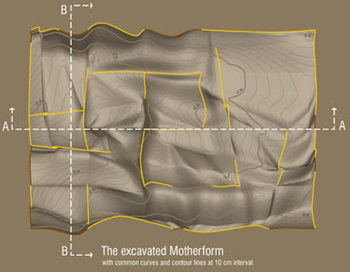
The excavated Motherform with common curves
Introduction
An entry for the 1999 Stuttgart Campustage,
a student competition for a pavilion on the roof of one of the University
buildings in central Stuttgart.
The brief requested a temporary and transportable pavilion constructed
as a "sky-deck" on the top of the University´s "Kollegiengebäude
I", the home of the department of architecture and urban planning.
The pavilion should offer the possibility to house modern technologies
used for a multimedia exhibition.
The proposal focuses on issues of fabrication,
site-specificity and spatial re-configurations.
In order to expose and sequence the complete 1170 m2 free area of
the roof/site, the pavilion was fragmented. The 70 m2 floor-area
specified in the brief was displaced to a new artificial site, the
Motherform, measuring 10 by 7 meters.
In the extraction of surfaces from the Motherform, common curves made possible the assembly of parts taken in different areas. The surfaces could endlessly be extracted within the computer model, to be investigated for optimum characteristics regarding general shape, specific parts and spatial configurations within groups.
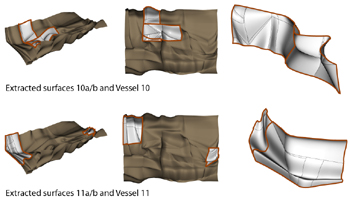
Vessels cast in Motherform
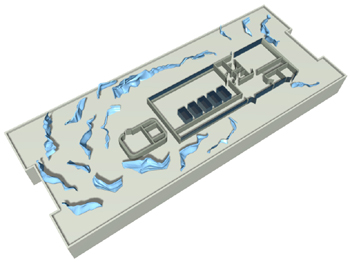
Vessel configuration on site

combinatorial examples
PARCEL development
The Motherform would be excavated out of the ground, the common curves being the vital parts requiring high precision. Its surface would be covered by a thin layer of concrete, with a smooth surface, for durability. The extracted surfaces are outlined and cast in the Motherform mould, in the construction of the components, or Vessels, that constitutes the pavilion.
The inherent curvature of the Vessels would enable multiple use, for sitting, projection, shelter from wind and rain etc. Since the Motherform mould would be permanent, situated in the vicinity of the actual site, new Vessels could later be created with the aid of the computer model.
In the combination with the integrated multimedia technology, a multitude of different situations could be created through the reconfiguration of Vessels.
The inherent curvature of the Vessels would enable multiple use, for sitting, projection, shelter from wind and rain etc. Since the Motherform mould would be permanent, and situated in the vicinity of the actual site, new Vessels could later be created with the aid of the computer model. In the combination with the integrated multimedia technology, a multitude of different situations could be created through the reconfiguration of Vessels
Project team DISPLACE: Amir Aman, Daniel
Norell and Jonas Runberger.
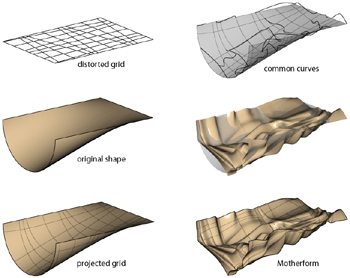
DISPLACE Motherform generation
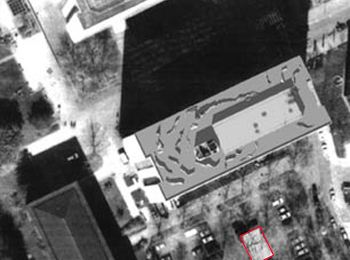
Dual sites